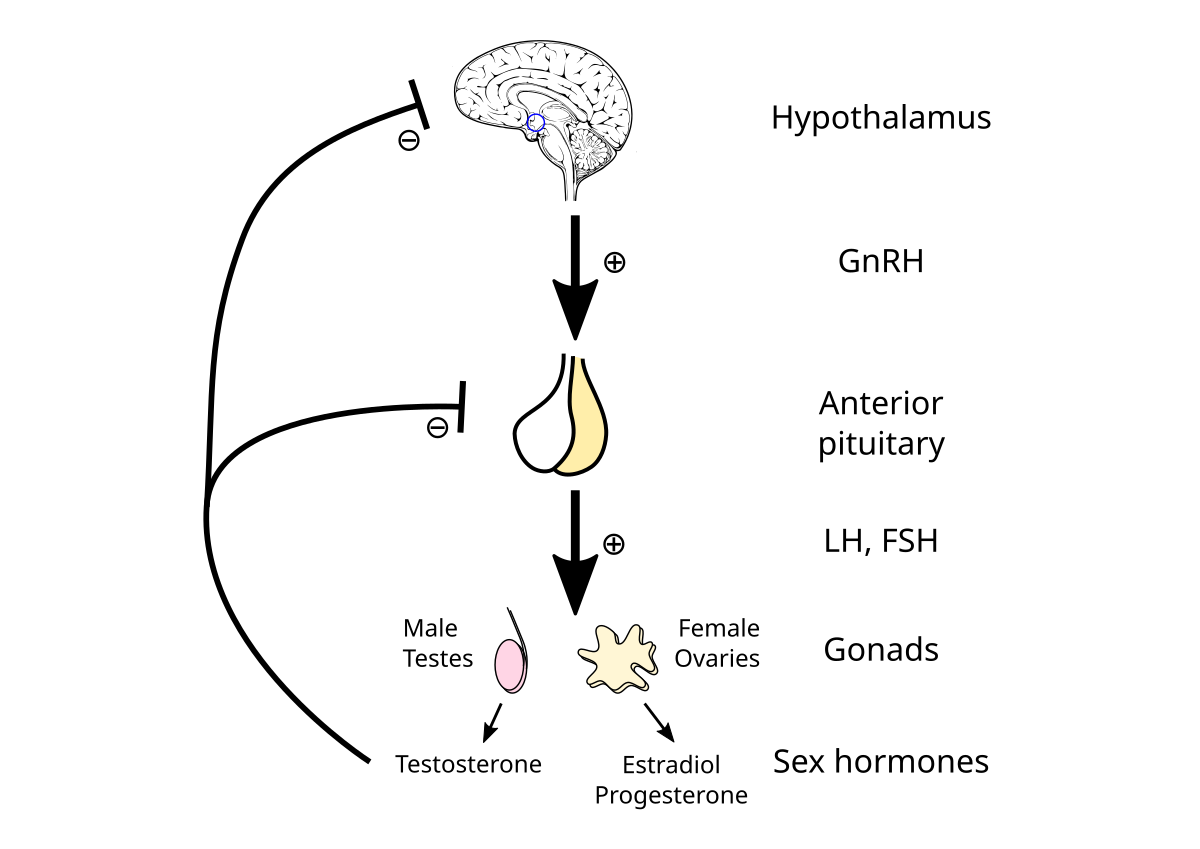HPO Axis

The Hypothalamic-Pituitary-Ovarian (HPO) Axis is a critical endocrine system that regulates female reproduction, including the menstrual cycle, ovulation, and fertility. It involves a complex, bidirectional communication network between the hypothalamus, pituitary gland, and ovaries, coordinating hormone secretion and reproductive function.
Components and Function
- Hypothalamus:
Contains the GnRH (gonadotropin-releasing hormone) pulse generator, specialized neurons that secrete GnRH in a pulsatile manner. GnRH stimulates the anterior pituitary to release gonadotropins. - Pituitary Gland (Anterior Pituitary):
Responds to GnRH by secreting luteinizing hormone (LH) and follicle-stimulating hormone (FSH). These hormones regulate ovarian follicle development and steroid hormone production. - Ovaries:
Produce estrogen and progesterone in response to LH and FSH. Estrogen promotes follicle maturation and exerts feedback on the hypothalamus and pituitary. After ovulation, the corpus luteum secretes progesterone to prepare the uterus for possible implantation and modulate the axis via negative feedback.
Regulatory Feedback Loops
- Negative Feedback:
Estrogen and progesterone inhibit GnRH, LH, and FSH secretion to regulate the cycle. This maintains hormonal balance and controls follicle development. - Positive Feedback:
Rising estrogen levels during the follicular phase trigger a surge in LH, leading to ovulation.
Role in the Menstrual Cycle
- The HPO axis orchestrates the menstrual cycle phases:
- Follicular phase: FSH stimulates follicle growth; estrogen rises.
- Ovulation: LH surge triggers egg release.
- Luteal phase: Progesterone from corpus luteum prepares the endometrium.
- Menstruation: If fertilization does not occur, progesterone falls, leading to shedding of the uterine lining.
Clinical Relevance
- Dysfunction of the HPO axis can cause ovulatory disorders, infertility, amenorrhea, and conditions like polycystic ovary syndrome (PCOS).
- Altered GnRH pulse frequency or sensitivity affects LH and FSH secretion, disrupting ovarian function.
- Therapeutic approaches include pulsatile GnRH administration and emerging treatments targeting kisspeptin pathways to restore normal axis function.
Summary Table
| Aspect | Details |
|---|---|
| Components | Hypothalamus (GnRH), Pituitary (LH, FSH), Ovaries (Estrogen, Progesterone) |
| Main Function | Regulate menstrual cycle, ovulation, and fertility |
| Feedback Mechanisms | Negative (estrogen/progesterone inhibit GnRH, LH, FSH), Positive (estrogen triggers LH surge) |
| Menstrual Cycle Phases | Follicular (FSH, estrogen rise), Ovulation (LH surge), Luteal (progesterone), Menstruation |
| Disorders | PCOS, hypothalamic amenorrhea, infertility |
| Treatments | Hormone therapy, pulsatile GnRH, kisspeptin analogs |
Consult with Our Team of Experts Now!
At DrStemCellsThailand (DRSCT)‘s Anti-Aging and Regenerative Medicine Center of Thailand, we emphasize comprehensive evaluations and personalized treatment plans of Cellular Therapy and Stem Cells for managing various health conditions. If you have questions about HPO Axis or would like more information on our services, consult with our experts today!
Consult with Our Team of Experts Now!
References
- “Hypothalamic-Pituitary-Ovarian Axis Disorders Impacting Female Reproduction”
DOI: 10.1016/j.maturitas.2018.12.012
The HPO axis is essential for female reproductive health, coordinating hormone secretion and ovarian function through tightly regulated feedback loops that control the menstrual cycle and fertility.















